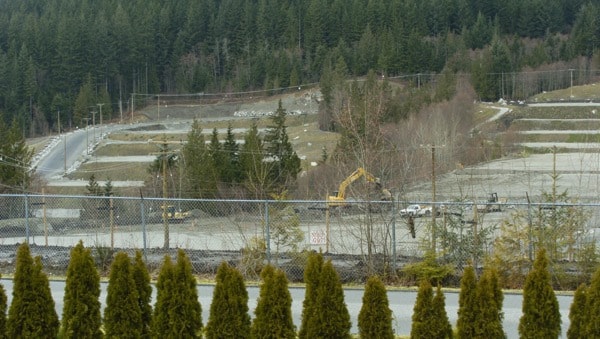The vast industrial development envisioned for northeast Maple Ridge may never come to fruition due to the site’s remote location, a consultant hired by the District of Maple Ridge told council at it workshop meeting Monday.
G. Paul Rollo and Associates was hired by the district to conduct a commercial and industrial strategy review and said the many vacant lots at the north end of 256th Street will likely stay that way until direct road access to the Golden Ears Bridge, via the Abernethy Connector, is provided.
“It won’t be competitive until the Abernethy Connector is completed,” Rollo said. “Even then, it’s not highly desirable land.”
The area is located well away from the nearest rail link, navigable body of water, highway, or public transit. The area is also devoid of amenities to service any workers commuting to the area.
Of the 301 acres currently zoned for industrial use in northeast Maple Ridge, only 11 acres have been developed, while 72 acres are considered underutilized.
Currently, the Kanaka Business Park has 48 vacant lots for sale, with only three having been sold, according to the business park’s own sales brochure.
The development bills itself as the most affordable vacant industrial land in Metro Vancouver, with prices ranging from $425,000 to $600,000 per acre.
That’s well below what’s being charged elsewhere, notes Mayor Ernie Daykin.
“If you look at the price of industrial land right across the river in Port Kells, it’s over $1 million per acre,” he said. “Today [northeast Maple Ridge] has its challenges ... but I think there’s still potential there.”
While it could be decades before the extension to Abernethy Connector is completed, at a cost between $25 to 35 million, Daykin stressed it was important to be patient, and plan for the long-term.
In the 1970s, Maple Ridge’s original official community plan designated the area of Lower Hammond, next to Hammond cedar mill, as industrial, Daykin said.
In the 1980s, as interest rates rose, there was less of a demand for industrial land and the council of the day opted to turn it into a residential neighbourhood.
“Perhaps if they’d stuck to their guns, it would have been prime industrial land,” Daykin said. “Maybe in 30 years, 256th [street] will be prime industrial land.”
In all, the District of Maple Ridge has 1,481 acres of designated industrial land in its current official community plan, with 811 zoned industrial acres.
Coun. Al Hogarth suggested expanding the allowable uses in northeast Maple Ridge to encourage a wider variety of businesses to locate there.
While Daykin said he was open to looking at adding more flexibility in the zoning, he would like to see retail and service businesses like pharmacies, lawyer’s offices and accountants stay in the downtown core.
“We need to stick to our plan and not make impulsive decisions,” he said.
Rollo’s final report is due back before council in September.
